Recreating the Country blog |
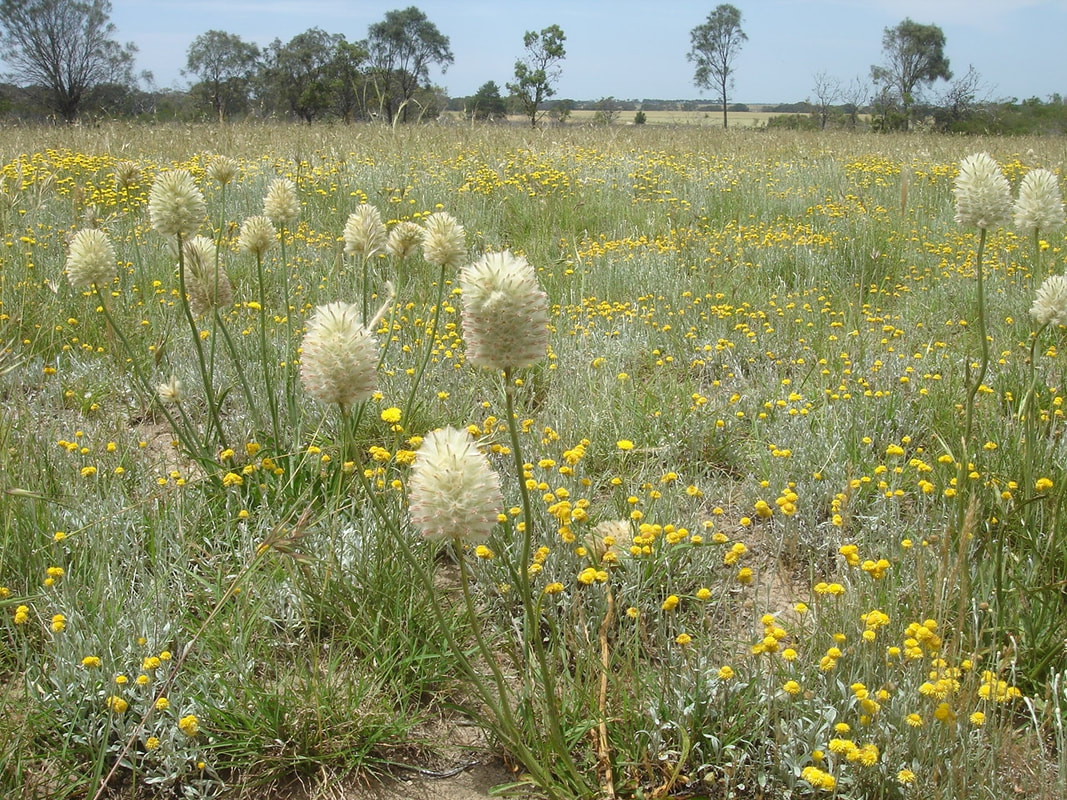 A grassland near Rokewood, Victoria. Photo Dale Smithyman A grassland near Rokewood, Victoria. Photo Dale Smithyman Native grasslands and grassy woodlands are delightful to visit in spring because of their tranquil beauty and absolute uniqueness. Every incredible flowering grassland is as different as the location, climate and soil where it's found. Tragically these native grasslands are fast disappearing and there are not many unspoiled grasslands left to visit. Of the one third of Victoria that was once covered in native grasslands and grassy woodlands in 1835, less than 0.5% remain today. The second bitter pill to swallow is that around 40% of Victoria’s threatened animal species depend on these grasslands. So we’re losing a lot more than the wildflowers. We’re losing our irreplaceable, rich and complex grassland ecology as well, that is an integral part of our distinctive Australian heritage. If you’re reading this blog then you’re likely to agree that protecting these natural assets is worthwhile and needs urgent action. It has become critically important that we make sure that this part of our natural heritage isn't completely lost in the coming decades. 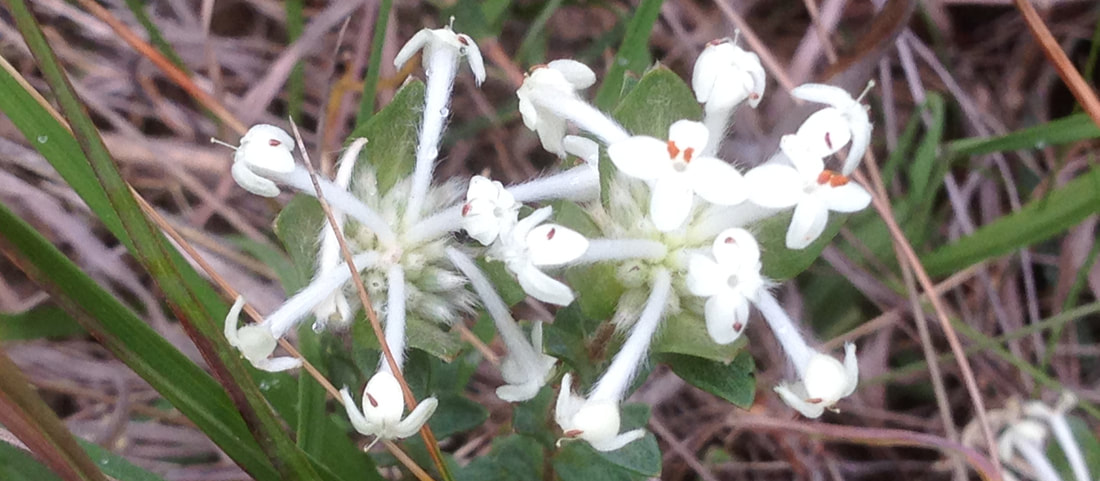 The Humble Rice-flower, Pimelea humilis. Politicians take note. The Humble Rice-flower, Pimelea humilis. Politicians take note. Saving grasslands and grassy woodlands How can we keep our remaining grasslands healthy and in good condition in future years for all Australians to enjoy? The answer is both cultural and practical.
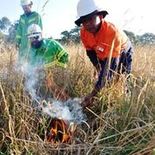 Traditional Owner method of cool burning is the key. Photo Tracey McRae Traditional Owner method of cool burning is the key. Photo Tracey McRae
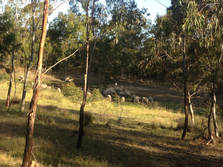 Merinos prefer to eat the exotice weedy grasses Merinos prefer to eat the exotice weedy grasses
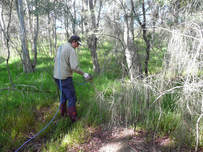 Spraying with herbicide is a necessary temporary solution. Its tedious and expensive Spraying with herbicide is a necessary temporary solution. Its tedious and expensive
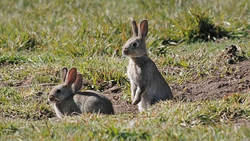 Rabbits were introduced on Christmas day 1859 and they continue to thwart all efforts to eradicate them. Rabbits were introduced on Christmas day 1859 and they continue to thwart all efforts to eradicate them.
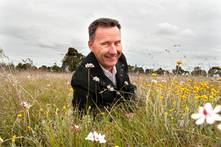 Paul Gibson-Roy in one of his planted grasslands. Photo: Sandy Scheltema Paul Gibson-Roy in one of his planted grasslands. Photo: Sandy Scheltema
 Bob Hawke planting a tree. Photo courtesy Australian National University Bob Hawke planting a tree. Photo courtesy Australian National University Current government policy won’t save our flora and fauna. My skeptical view after years working with the system is that governments are only willing to ‘toy’ with the practical solutions because doing the job properly is seen as a mine field of expenditure black holes. They choose to provide little bits of funding through grants to Landcare and community groups. This practice permits them to boast about all the good work and millions of trees they’re planting. For politicians, planting trees is the environmental equivalent of kissing babies. It’s an opportunity for a newspaper photo but it does little to solve the real problems. Sadly there doesn’t seem to be any kudos for politicians if they boast that they have protected or restored a grassland. They seem to prefer to have their environmental credentials measured by the numbers of trees that were planted on their watch. Remember Bob Hawke’s famous election pledge in 1989; "Bob Hawke crossed his heart and hoped to die if his Labor government didn't honour his 1989 election pledge to plant "a billion trees". What about saving a billion trees Hawkey? The present Federal Government Landcare funding has 'lowered the bar' from Bob Hawke's flamboyant boast, but the marketing principal is still the same. Its current funding program is called Twenty Million Trees by 2020. The sad truth is that governments have to be dragged kicking and screaming to protect a tree, a grassland, a woodland or a forest. It’s much sexier to plant a tree than protect a tree. There is a widely held view in the community that only tree hugging greenies protect trees and cynically I can imagine a politician asking, 'where's the photo opportunity'?  The inadequate funding system is built around a drip feed of grants for tree planting The inadequate funding system is built around a drip feed of grants for tree planting The current biodiversity funding system is unworkable What we have been lumbered with is an extremely inefficient system built around a drip feed of grants for tree planting. What we need is a system that prioritises protecting and enhancing the bushland reserves that we have while building substantial vegetation corridors connecting them. Some significant new reserves could be part of this new system To be fair there is some grant money for biodiversity protection which focuses on the control of invading introduced pest species like grassy weeds and rabbits. This is a lifeline for conservation volunteers who spend their weekends trying to hold back the tide of exotic invaders. However this money is grossly inadequate to do the job properly. It’s also far too short term because it's usually provided for just one or two year’s work. Haven’t politicians and their advisers heard the age old gardener’s mantra? ‘One year’s seeding leads to seven years weeding’. Biodiversity grants should be ongoing to enable pest plants and animals to be managed in the long term.  The present grant system 'burns out' a lot of good people The present grant system 'burns out' a lot of good people We are ‘burning out’ good people. This system also ‘burns out’ a lot of good people who spend days and weeks fruitlessly applying for grants. Since the grant system was introduced it has without exception returned unacceptably low levels of success. The average Landcarer very quickly loses heart because applying for grants is seen as a waste of precious time. As a consequence many worthy projects have never been started. Little or no monitoring. The other side to this frustrating system is that we are getting a tragically low ‘bang for our buck’ as taxpayers. This is because there is little or no monitoring of the outcomes of tree planting. No one knows how many plants survive each year and how the results could have been improved. There are many great results but there are also many very poor results where there is not a tree surviving to show for a multi-thousand dollar project. 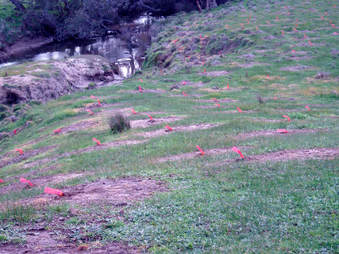 Our taxes have funded the planting of millions of trees, but we have no idea how many have survived Our taxes have funded the planting of millions of trees, but we have no idea how many have survived A local farmer who planted around 10,000 indigenous plants in 2016 mentioned that he achieved only 20% survival because of the dry spring. Governments don’t seem to be interested in these statistics, but they are statistics that are critical to understanding how to achieve better planting results in the future as well as the best use of these tax payer dollars. 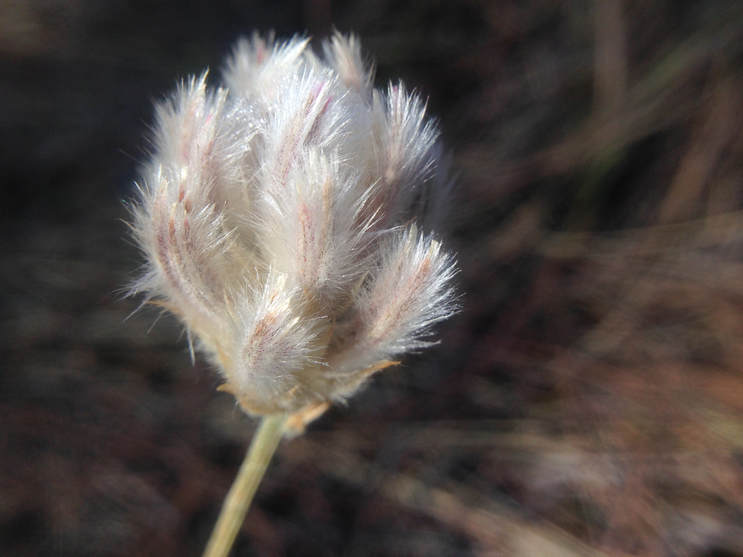 The very rare and beautiful Pussy Tails, Ptilotus erubescens. Going, going .......... The very rare and beautiful Pussy Tails, Ptilotus erubescens. Going, going .......... We’re losing the race The sad indictment is that we are still losing more native vegetation than we are planting or saving. "Approximately 1,600 ha of woody vegetation and 3,000 ha of rare grassy native vegetation continue to be lost annually in Victoria, only a small proportion of this is matched by vegetation offsets” Matt Ruchell : Executive Director Victorian National Parks Associations (March 2012) A simple solution that politicians don’t want to hear. A simple solution that would dramatically accelerate restoration work is tax incentives for landowners. This is an effective and historically successful method of changing spending behaviour. It also returns the initiative to the landowners who are more likely to be aware of the problems to address and assets to protect on their properties. This isn't a popular idea with governments because it takes away their control of some of the environmental budget's spending. If they thought it through more thoroughly, they would have to acknowledge the potential to bring about huge environmental changes far more efficiently. For example, if the Federal Government offered 150 - 200% deductions on all private money spent on protecting and restoring the natural environment, we would engage a lot more farmers. This single initiative would also free up Landcare facilitators from the thankless task of writing grant applications. Their time could be better spent in the field advising farmers, improving their success and auditing the years revegetation projects. The long term answer involves cultural change.
Part 2 on 'raising the profile of the natural environment' will be posted in January 2018 'Have a safe and enjoyable Christmas & New Year' Good cheer, Steve
10 Comments
Angie
6/12/2017 09:24:30 am
Hi Steve,
Reply
Steve
7/12/2017 10:08:04 pm
HI Angie,
Reply
Glen White
7/12/2017 08:16:14 pm
Hi Steve
Reply
Steve
7/12/2017 09:54:43 pm
Hi Glen,
Reply
Richard Murphy
8/12/2017 03:38:56 pm
Under strategic management livestock (cattle, sheep, horses) become tools that land managers can use to increase the density and diversity of pastures to include a strong representation of native grasses while farmers continue to achieve, or even increase, production and profit targets. Where implementing Holistic Planned Grazing, farmers have been able to massively increase native grasses (kangaroo grass, wallaby grass, weeping grass) populations. Rather than detrimental to soil structure, the hard hooves press organic matter against the soil surface providing food for soil organisms whose growth and activity build soil structure, release bound soil nutrients and increase soil carbon. Native grasses have good grazing qualities. Animals will only rub against trees causing damage where the stock have been allowed to linger too long. This will not happen where stock are moved regularly.
Reply
Steve
8/12/2017 04:13:58 pm
Thanks for those insightful comments Richard. The use of Holistic Planned Grazing as a strategy for maintaining native grass cover can only benefit farmers who want to provide green pick for stock in the summer months. Kangaroo grass and Weeping grass are particularly good at responding to summer rains and they are very nutritious as well.
Reply
Stephen Pennells
13/12/2017 05:38:18 pm
Strathbogie Voices
Reply
Steve
13/12/2017 09:44:41 pm
Thanks Stephen for pointing me in the direction for the Lake Bolac Eel Festival site. http://www.eelfestival.org.au/about.html.
Reply
John Delpratt
15/12/2017 09:41:49 pm
From John Delpratt; David Franklin; Liz Fenton and Paul Gibson Roy
Reply
Steve
20/12/2017 08:30:02 am
Thank you John, David, Liz and Paul. What a great summery of the benefits of maintaining and restoring grasslands. I agree that the costs can be reduced significantly with the help of local resourceful people.
Reply
Leave a Reply. |
Click on the image below to discover 'Recreating the Country' the book.
Stephen Murphy is an author, an ecologist and a nurseryman. He has been a designer of natural landscapes for over 30 years. He loves the bush, supports Landcare and is a volunteer helping to conserve local reserves.
He continues to write about ecology, natural history and sustainable biorich landscape design. 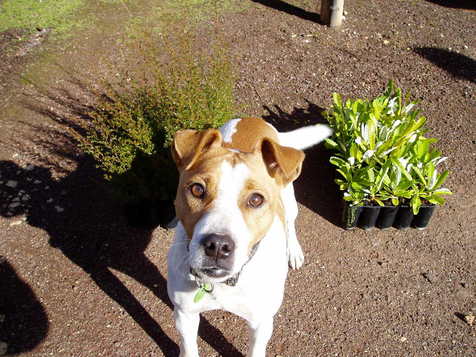
|
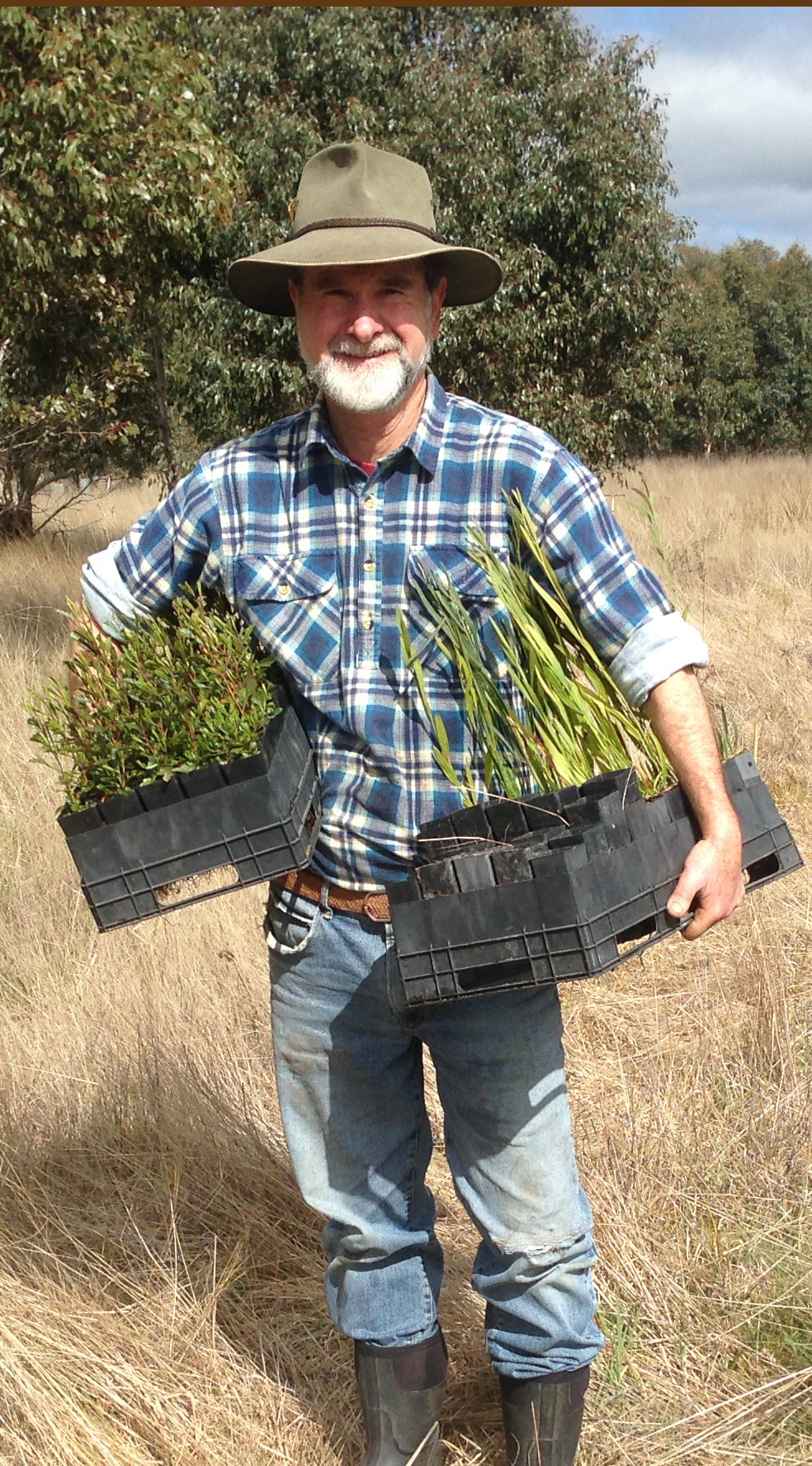

 RSS Feed
RSS Feed
